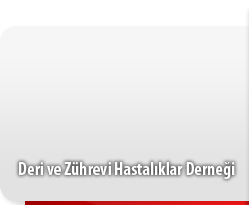Our therapeutic approach to TEN: the retrospective evaluation of rotational and combination therapiesEmel Bülbül Başkan1, Şükran Tunalı1, Serap Köran Karadoğan1, Hayriye Sarıcaoğlu1, Emel Yılmaz2Background and design: Toxic epidermal necrolysis (TEN) is a severe, progressive disease most commonly induced
by drugs and characterized by the sudden onset of skin necrolysis. It is frequently associated with systemic
involvement and has a high mortality. No standard therapeutic regimen exists for the medical therapy of TEN.
Material and Methods: We retrospectively evaluated a total of 8 TEN cases followed up by our department
since 2000 and documented the demographic features, clinical presentation of these cases and their response
to combination and rotational therapies with pulse steroids, IVIgs and plasmapheresis.
Results: The most frequently culprit drug was found to be phenytoin followed by ciprofloxaciline and salicilic
acid. Three of the cases were diagnosed as Overlap SJS-TEN, three as TEN with spots and two as TEN
without spots. The therapy of five of 8 patients treated with high doses of corticosteroids were combined
with IVIgs (0.6-0.7 g/kg/d for 5 days) due to the aggressive course of disease. Plasmapheresis was also
performed to three of five cases who received IVIgs. All five cases who receieved the combined immunsuppressive
drugs developed sepsis that was effectively controlled with antibiotics.
Conclusion: In conclusion, the survival of all TEN patients except one with decompansated renal failure with
these therapeutic regimens provides evidence for the efficacy of combined and rotational therapies of corticosteroids,
IVIgs and plasmapheresis. We recommend that these therapies should be administered by an
experienced team with a multidisciplinary approach. Keywords: TEN; IVIg, plasmapheresis, therapy
TENde Tedavi Yaklaşımımız: Rotasyonel ve Kombine Tedavilerin Retrospektif İncelenmesiEmel Bülbül Başkan1, Şükran Tunalı1, Serap Köran Karadoğan1, Hayriye Sarıcaoğlu1, Emel Yılmaz21Uludağ Üniversitesi Tıp Fakültesi Deri ve Zührevi Hastalıklar Anabilim Dalı
2Uludağ Üniversitesi Tıp Fakültesi Enfeksiyon Hastalıkları ve Klinik Mikrobiyoloji Anabilim Dalı
Toksik epidermal nekrolizis (TEN) sıklıkla ilaçlarla tetiklenen ve deride ani nekrozla karakterize şiddetli ve ilerleyici
bir hastalıktır.Sıklıkla sistemik tutulum görülür ve yüksek mortaliteye sahiptir.TENin medikal tedavisinde standart
bir tedavi rejimi bulunmamaktadır. Kliniğimizde 2000 yılından beri takip edilmiş olan toplam 8 TEN olgusunu retrospektif olarak değerlendirdik ve olguların demografik özelliklerini, klinik görünümlerini ve pulse steroid, Intravenöz immunoglobulinler (IVIg) ve plazmaferez ile kombine ve rotasyonal tedavilere cevaplarını sunduk.
En sık saptanan sorumlu ilaç fenitoin olup takiben siproşoksasin ve salisilik asit bulundu. Olguların üçüne Overlap SJS-TEN, üçüne Spotlu TEN ve ikisine Spotsuz TEN tanısı konuldu.Hastalığın şiddetli seyrinden dolayı yüksek doz kortikosteroid ile tedavi gören 8 olgunun beşinde tedaviye IVIg (0.6-0.7 g/kg/g 5 gün boyunca) eklendi. IVIg alan beş olgunun üçüne plazmaferez de uygulandı. Kombine tedavi gören beş olgunun hepsinde antibiyotiklerle kontrol altına alınabilen sepsis tablosu gelişti. Sonuç olarak, uyguladığımız tedavi rejimleri ile dekompanse renal yetmezliği olan bir olgu dışındaki tüm TEN olgularının iyileşmesi, kortikosteroid, IVIg ve plazmaferezle kombine ve rotasyonal tedavilerin etkinliğini göstermektedir. Bu tedavilerin deneyimli bir ekip tarafından multidisipliner bir yaklaşımla uygulanmasını öneriyoruz. Anahtar Kelimeler: TEN, IVIg, plazmaferez, tedavi
Emel Bülbül Başkan, Şükran Tunalı, Serap Köran Karadoğan, Hayriye Sarıcaoğlu, Emel Yılmaz. Our therapeutic approach to TEN: the retrospective evaluation of rotational and combination therapies. Turkderm-Turk Arch Dermatol Venereol. 2005; 39(2): 115-120 |
|



